Secret Gardens: The National Palace of Pena, Sintra, Portugal
Posted by SECRET GARDENER
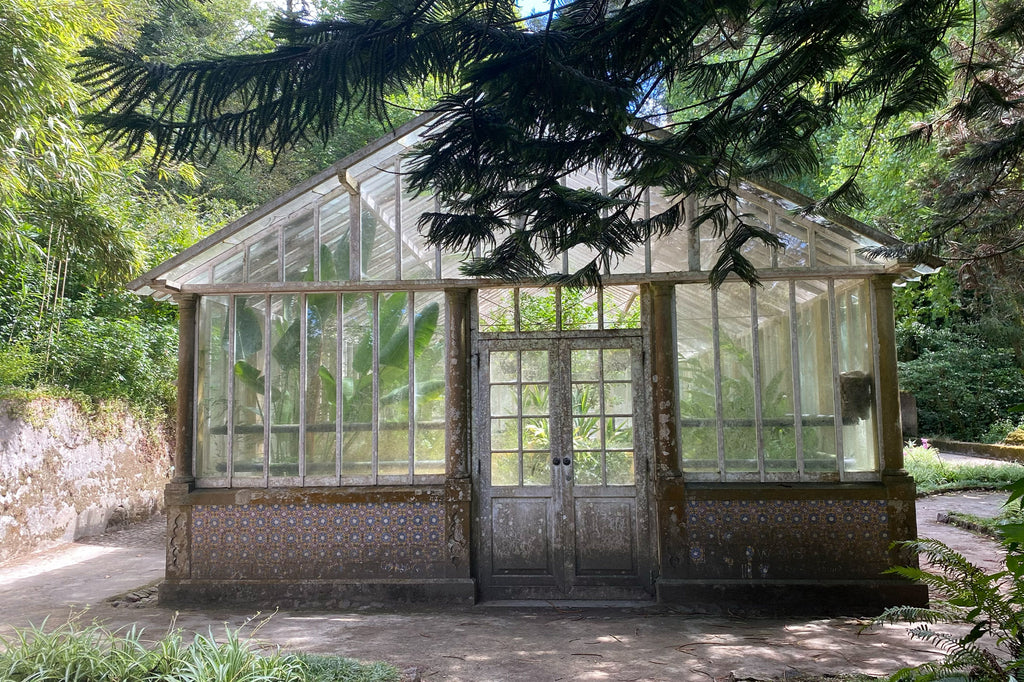
The history of the National Palace of Pena
Standing tall in the mountains of the mystical town of Sintra lies the National Palace of Pena. As a UNESCO World Heritage Site, Sintra is easily one of the most beautiful places to visit in Portugal. As home to many lavish palaces and their grounds, it makes a great day trip as there is so much to see and explore.
Pena Palace is situated 24km from the centre of Lisbon, but on a clear day you can see the city from the top of the colourful parapets.
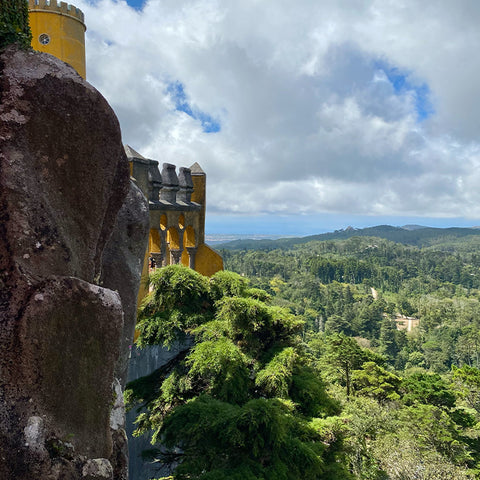 Above: the views from the parapets of Pena Palace
Above: the views from the parapets of Pena Palace
On its site there was formerly a monastery and chapel dedicated to “Our Lady of Pena,” built in the Middle Ages, which gained religious recognition after a reported apparition of the Virgin Mary. Over time, the monastery was damaged by lightning, a ruinous earthquake in the 1700s and was finally abandoned following the abolition of religious orders in Portugal in 1834.
Soon after this, Queen Maria II of Portugal married Ferdinand of Saxe-Coburg and Gotha, a cultured individual with a strong passion for the arts. He fell in love with Sintra and acquired the ruins of the monastery. Together with engineer and architect, Baron Wilhelm Ludwig von Eschwege, he designed the National Palace of Pena and its extensive park.
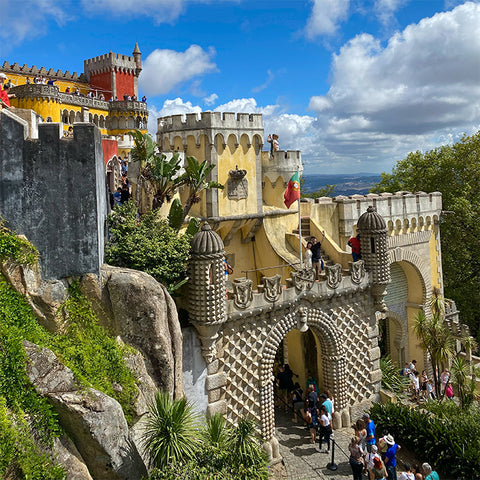 Above: the exterior of the entrance to Pena Palace
Above: the exterior of the entrance to Pena Palace
To this day the palace sits as one of the foremost examples of 19th century Romanticism in Portugal. Ornately carved animal heads feature in the elaborate stonework, with Moorish style tiling across the façade, and turrets of turmeric yellow and red spice.
One of the most iconic structures is the Triton Gateway, envisioned by Ferdinand II. Triton, son of Poseidon, holds a tree trunk whilst perched upon a giant shell, symbolic of the Sintra Mountains and the Portuguese ventures during the Age of Discovery.
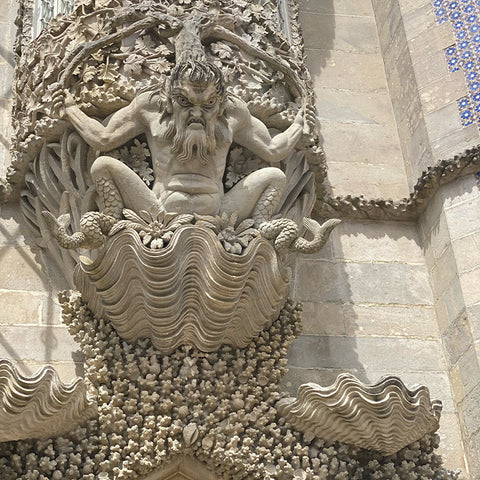 Above: the Triton Gateway
Above: the Triton Gateway
The Park of Pena: the most important arboretum in Portugal
The palace’s grounds are a maze of hidden paths and forest trails leading to landmarks, secret gardens, grottos, and impressive views. Key points of interest not to miss include the Statue of the Warrior, the Temple of Columns, the Grotto of the Monk, the Queen’s Fern Valley and the Chalet of the Countess of Edla.
 Above: The Statue of the Warrior is a bronze work by sculptor Ernesto Rusconi (1848). The warrior is an imaginary medieval knight who stands guard over the lands of Pena.
Above: The Statue of the Warrior is a bronze work by sculptor Ernesto Rusconi (1848). The warrior is an imaginary medieval knight who stands guard over the lands of Pena.
The Park of Pena is the most important arboretum in Portugal, as Ferdinand II filled the park with tree species from all over the world. They have since grown into a dense, magical landscape to explore.
 Above: the Queen's Fern Valley
Above: the Queen's Fern Valley
The Queen’s Fern Valley is a lush forest of tree ferns, most of which were imported from Australia and New Zealand. The ferns were planted in a valley with special climate conditions and is surrounded by deciduous trees.
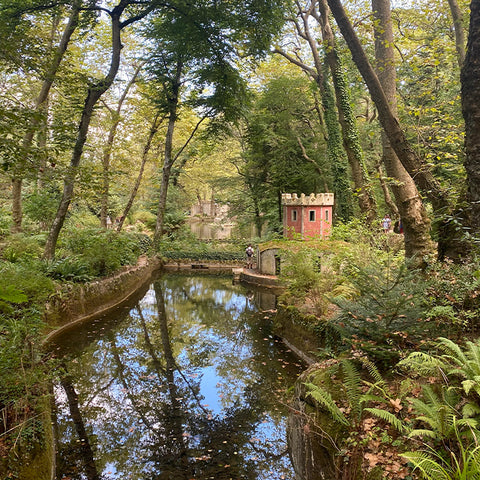 Above: the duck houses shaped like palaces in the Valley of the Lakes
Above: the duck houses shaped like palaces in the Valley of the Lakes
The Valley of the Lakes is a stream of five lakes, home to many ducks. The ducks have their own castellated houses, the architecture of which reflects that of the Moorish Castle, and the Palace of Pena.
How to get to the National Palace of Pena
 Above: tiling detail at Sintra Station
Above: tiling detail at Sintra Station
National Palace of Pena
Estrada da Pena
2710-609 Sintra
Portugal
Travel: If you’re staying in Lisbon you can easily get the train from Rossio to Sintra station, and the journey takes about 30 minutes. (Tip: sit at the front of the train as this is where the exit is at Sintra Station.)
Exit the station, turn right, and walk down the street to the bus stop. Don’t be tempted by a taxi – a bus ticket for the day allows you to use any of the buses to get around Sintra, and costs €11.50 (you can buy tickets on the bus.) Visit the Scotturb website for latest bus travel info.
To avoid the crowds, plan to get to Sintra in time for the first bus at 9:15am (the 434 Tourist Bus goes to Pena Palace), and be prepared to spend several hours at the Palace as it can get very busy!
Entry: €14.00 for an adult, and includes entry to the Palace and the park. It is recommended to purchase entry tickets in advance to avoid long queues at the gate.
Opening times: 9.00am to 7.00pm (palace closes at 6.30pm)

